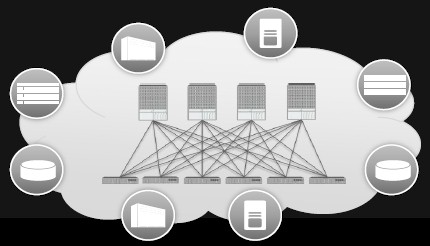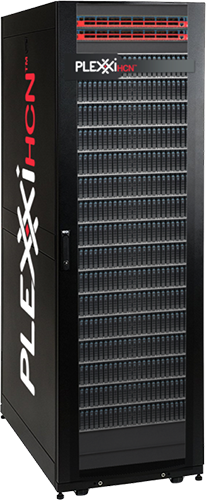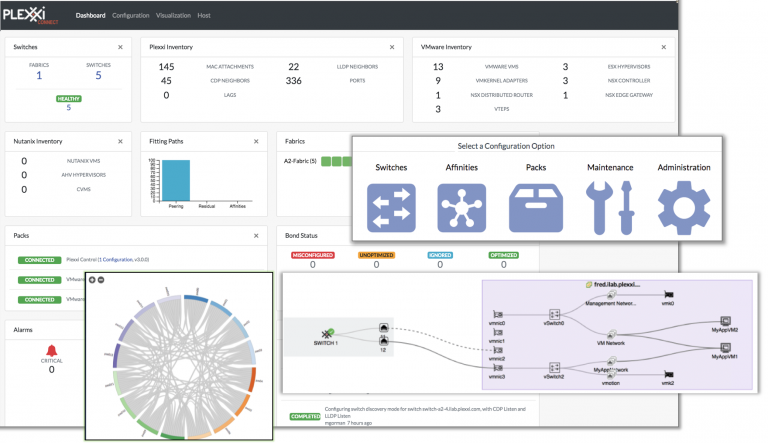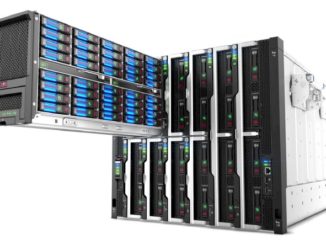
It is safe to say that companies that have traditionally built server, storage, and switch hardware have had a tough time finding their place in a world that is increasingly allergic to appliances and wants everything to come as software that customers have more control over. Even those vendors that are innovating at the hardware level have a heavy software hook, and no hardware vendor can leave itself in the position of just shifting boxes if it hopes to have a profitable business.
Hence the recent acquisitions by both Dell and Hewlett Packard Enterprise. Dell, of course, shelled out a whopping $67 billion to get its hands on EMC and therefore server, storage, and network virtualization software provider VMware. While HPE spun off substantially all of its software business – except its core systems software – to Micro Focus, it has made some key acquisitions here, notably paying $650 million early last year to buy SimpliVity for its OmniCube hyperconverged storage. Now HPE is rounding out its software-defined stack in the networking arena by acquiring Plexxi, and that has us wondering if at some point HPE might also cook up its own virtual compute stack based on the KVM hypervisor and the Kubernetes container controller. (It looks like HPE is content to tap Red Hat Enterprise Linux or Microsoft Windows Server and be done with it on the compute front.)
HPE has been piecing together its hyperconverged infrastructure through a combination of internal innovation, acquisitions and partnerships. It has built out its hyperconverged stacks leveraging its ProLiant servers, Apollo HPC systems, and StoreVirtual software. Getting ahold of the SimpliVity software platform gave HPE a hypecoverged storage play. HPE last year combined the ProLiant DL380 server with SimpliVity’s platform to create the SimpliVity 380, which includes the vendor’s 4000 and 6000 series all-flash storage for addressing disparate workload sizes and providing improved resilience and backup features.
HPE also emphasized the SimpliVity deal also helped juice the company’s thee-year-old Synergy composable infrastructure efforts. The vendor sees composable – the ability to create pools of datacenter resources that can be deployed, managed and used via software – as strategic over the long haul, and customers are adopting Synergy platforms with SimpliVity software.
Plexxi was among a fast-growing group of software-defined networking startups when it launched in 2010, and it has raised $83.4 million in five rounds of funding. Over the past several years, Plexxi has expanded its portfolio to include Connect, an automated workflow platform for its network fabric, Control for network visibility and management, and its Switch 3eq and Switch 2e Entry Series switches. It also offers a series of hyperconverged networking (HCN) software suites (pictured below) for shared storage, cloud and VMware environments as well as HCI, which highlights partnerships with not only HPE SimpliVity but also Dell EMC and Nutanix.
No financial details of the Plexxi acquisition were announced. The deal, which is expected to close before the end of July, will be boon for HPE’s initiatives in both hyperconverged and composable infrastructure, according to Ric Lewis, senior vice president and general manager of HPE’s Software-Defined and Cloud Group.
“Through this acquisition, we will deliver hyperconverged and composable solutions with a next-generation data network fabric that can automatically create or re-balance bandwidth to workload needs,” Lewis wrote in a post on the company blog. “This will increase agility and efficiency, and accelerate how quickly companies deploy applications and draw business value from their data.”
Having Plexxi in the fold will give HPE a hyperconverged offering that includes a data fabric network with compute and storage in a single solution with one interface. He also noted that HPE soon will leverage Plexxi to launch a composable rack solution that will broaden the use cases for enterprises using Synergy in their datacenters.
The deal will help HPE address an area of HCI that hasn’t been thoroughly addressed, according to Sarwar Raza, vice president of strategy at the Software Defined and Cloud Group. Over the past few quarters, Plexxi has created a unique integrated networking fabric for HCI that is dynamically driven by workload demands that can automatically configure the network based on those demands. It also can scale within and between racks and uses only a leaf architecture, without the need for spine switches, Raza tells The Next Platform. The networking software can discover hyperconverged systems, determine where such architecture components like VLANs are located, automatically discover and isolate traffic, and manage the network. The result is that the network becomes part of the programmable pool of resources.
“Hyperconverged really solved the customer problem of complexity for storage, so you are really able to have virtualized compute and virtualized storage show up as these fluid virtual resources and be able to orchestrate them as such,” he said. “But no one was really able to look at that problem from the angle of networking. Networking continued to be sort of the problem child.”
With Plexxi and SimpliVity in hand, HPE has a strong play in HCI storage and networking to go with the compute systems it already has. Dell EMC, a strong competitor in the hyperconverged space, owns VMware and EMC, giving it complete control of its stack, from the compute and hypervisor through storage and networking. Raza said HPE not owning the hypervisor doesn’t put it at a disadvantage to Dell EMC. The goal is to give enterprises a range of choices, with the latest example being the vendor announcing SimpliVity support for Hyper-V.
In the HPE Synergy offering, the compute, storage, and networking all defined in software, not sealed up in black box appliances.
“However, it’s operating in the confines of a chassis,” Raza said. “The Plexxi technology gives us an avenue to bring the same experience to other form factors of compute, specifically rack-mounted machines. There are a lot of customers who have a preference for rack-mount systems versus blades or Synergy frames, so we think about how we enable that common experience, and that experience being making available to them these virtualized resources, irrespective of where I’m coming from. We intend to integrate the Plexxi technology into our software-defined networking solutions for composable and really unify their experience. As the center for us is HPE OneView, which is our infrastructure manager. You will see us integrate a lot of the Plexxi smarts and Plexxi visualization up through OneView.”
Having the rack-mount capabilities for Synergy is important for giving enterprises greater flexibility in their infrastructures, he said. A traditional rack system includes 24 servers and some top-of-rack systems wired to a spine switch, which is fairly static.
“You wire it once and hopefully your workload characteristics meet the oversubscription and the choice of protocols and overall topology,” Raza said. “In the case of composable, where we see this technology being used, is you wire it once and it’s completely programmable and it’s programmable from software, so you as an administrator now have the ability to drop a set of workloads – and they don’t have to be the same workload – and the Plexxi technology allows you to be able to create different types of networks inside the same fabric to support different workloads.”
HPE had about 1,400 customers in its Synergy business this time last year, from enterprises in such areas as manufacturing, oil and gas and genomics research. Given its size and position in the industry, HPE gets the lion’s share of attention when it comes to composable infrastructure, though it’s not the only vendor with its eyes on the space. Smaller companies like TidalScale, HTBase, and Liqid also are looking for traction, and at its recent Dell Technologies World event earlier this month, Dell EMC talked briefly about its efforts in moving toward composable infrastructure and teased its upcoming PowerEdge MX system. Not many details were released, though the company said more information would be coming this year.
In his own blog post, Plexxi chief executive officer Rich Napolitano said the two companies have a shared vision of what a composable infrastructure should look like and the importance of the network in such an environment.
“By combining software-defined topologies and intent-based automation with workload and infrastructure awareness we set out to change the way IT saw and managed the network,” Napolitano wrote. “No longer a silo, Plexxi saw the network as an integral part of the data center system – a holistic fabric that not only simplified tasks but also increased efficiency and reduced complexity and cost. It is extremely gratifying to see the industry take this turn with us with the rise of composable data center practices and HCI.”
Plexxi, which has about 100 employees, isn’t standing still waiting for the HPE deal to close. The same day that HPE announced its plans to buy Plexxi, the smaller company introduced VMware interoperability with its HCN software suite, which includes Control 4.0 and Connect 3.0. That came a week after Plexxi unveiled an HCN reference architecture that gives enterprises a pre-built hardware architecture for automating the networking underneath the Nutanix Acropolis HCI stack.







Be the first to comment